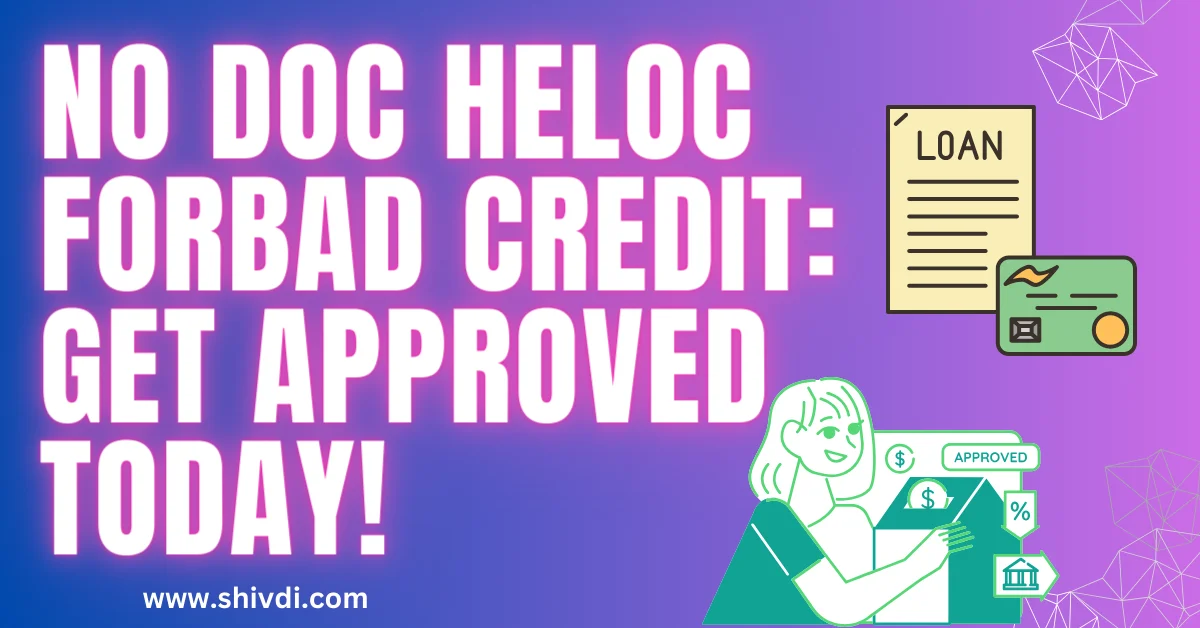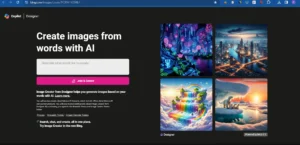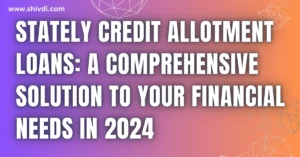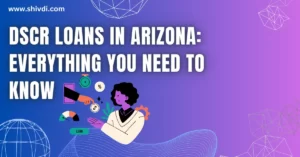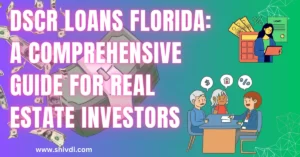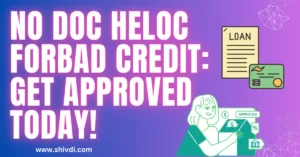No doc HELOC for bad credit? Sounds too good to be true, but it’s not! Learn how to get approved for a HELOC with bad credit, even if you don’t have W-2 income. Find out who offers no doc HELOCs, the requirements, and the pros and cons of this type of loan.
Introduction
Do you need access to cash equity in your home, but have difficulty qualifying for a traditional HELOC? A no doc HELOC may be the solution for you. No doc HELOCs do not require traditional income verification, making them a good option for self-employed individuals, freelancers, and small business owners. They can also be a good option for borrowers with bad credit.
What is a no doc HELOC?
A no doc HELOC, or no documentation home equity line of credit, is a type of HELOC that allows borrowers to qualify without providing traditional income verification documentation, such as W-2s or tax returns. Instead, lenders will typically use alternative methods to verify income and assets, such as bank statements or asset statements.
No doc HELOCs are often attractive to self-employed individuals, freelancers, and small business owners who have difficulty providing traditional income documentation. They can also be a good option for borrowers with bad credit, as lenders may be more willing to approve a no doc HELOC than a traditional HELOC.
However, it is important to note that no doc HELOCs typically come with higher interest rates and fees than traditional HELOCs, due to the increased risk to the lender. It is also important to carefully compare offers from different lenders before choosing a no doc HELOC, as some lenders may have more favorable terms than others.
Here are some of the advantages and disadvantages of no doc HELOCs:
Advantages:
- Easier to qualify for than traditional HELOCs, especially for self-employed individuals, freelancers, and small business owners.
- Can be a good option for borrowers with bad credit.
- Can be used to access cash equity in your home for a variety of purposes, such as consolidating debt, making home improvements, or investing.
Disadvantages:
- Typically come with higher interest rates and fees than traditional HELOCs.
- More difficult to find a lender that offers no doc HELOCs.
- May not be available in all areas.
If you are considering a no doc HELOC, it is important to weigh the pros and cons carefully and to compare offers from different lenders before making a decision.
How does it compare to a traditional HELOC?
This is a comparison of no doc HELOCs and traditional HELOCs
| Feature | No doc HELOC | Traditional HELOC |
| Income verification | No traditional income verification documentation required | Traditional income verification documentation required, such as W-2s or tax returns |
| Credit requirements | May be easier to qualify for with bad credit | More difficult to qualify for with bad credit |
| Interest rates | Typically higher than traditional HELOCs | Typically lower than no doc HELOCs |
| Fees | Typically higher than traditional HELOCs | Typically lower than no doc HELOCs |
| Availability | More difficult to find a lender that offers no doc HELOCs | More widely available |
Here is a table that summarizes the key differences between no doc HELOCs and traditional HELOCs:
| Characteristic | No doc HELOC | Traditional HELOC |
| Income verification | Not Required | Required |
| Credit requirements | Easier To Qualify for | More Difficult to qualify for |
| Interest rates | Higher | Lower |
| Fees | Higher | Lower |
| Availability | More Difficult to find | More widely available |
Who offers no doc HELOCs?
Not all lenders offer no doc HELOCs, but some of the lenders that do include:
- Truss Financial Group
- Griffin Funding
- MortgageDepot
- NewRez
- Caliber Home Loans
- Paramount Residential Mortgage Group
- Freedom Mortgage
- PrimeLending
- Amerisave Mortgage
- United Wholesale Mortgage
- Churchill Mortgage
It is important to note that not all of these lenders offer no doc HELOCs in all areas, so it is important to check with the lender to see if they offer no doc HELOCs in your state.
You can also find a list of no doc HELOC lenders by searching online or by contacting a mortgage broker.
Here are some tips for finding a lender that offers no doc HELOCs:
- Look for lenders that specialize in non-QM loans, or non-qualified mortgages.
- Contact your local mortgage broker and ask if they know of any lenders that offer no doc HELOCs.
- Search online for lenders that offer no doc HELOCs in your state.
Once you have found a few lenders that offer no doc HELOCs, be sure to compare offers and weigh the pros and cons before making a decision.
What are the requirements?
The requirements for a no doc HELOC vary by lender, but most lenders will require the following:
- A minimum credit score of 620
- A minimum loan-to-value (LTV) ratio of 80%
- A minimum debt-to-income (DTI) ratio of 43%
- Proof of homeownership
- Proof of identity
- Bank statements or other documentation of assets
Some lenders may also require additional documentation, such as asset statements or business tax returns.
It is important to note that no doc HELOCs are typically more difficult to qualify for than traditional HELOCs, due to the increased risk to the lender. If you have bad credit or a high DTI ratio, you may have difficulty qualifying for a no doc HELOC.
Here are some tips for improving your chances of qualifying for a no doc HELOC:
- Make a down payment of at least 20% to reduce your LTV ratio.
- Pay down your debt to reduce your DTI ratio.
- Improve your credit score.
- Provide the lender with as much documentation as possible of your assets and income.
If you are not sure if you qualify for a no doc HELOC, you can contact a lender to discuss your options.
Here are some additional requirements that some lenders may have for no doc HELOCs:
- Employment verification
- Proof of self-employment
- Proof of business income
- Proof of rental income
- Proof of investment income
- Proof of assets, such as bank statements or investment statements
It is important to check with the lender to see what specific requirements they have for no doc HELOCs.
Pros and cons of no doc HELOCs
Pros of no doc HELOCs:
- Easier to qualify for: No doc HELOCs are easier to qualify for than traditional HELOCs, especially for self-employed individuals, freelancers, and small business owners who have difficulty providing traditional income verification documentation.
- Can be a good option for borrowers with bad credit: No doc HELOCs may be a good option for borrowers with bad credit, as lenders may be more willing to approve a no doc HELOC than a traditional HELOC.
- Can be used to access cash equity in your home: No doc HELOCs can be used to access cash equity in your home for a variety of purposes, such as consolidating debt, making home improvements, or investing.
Cons of no doc HELOCs:
- Typically come with higher interest rates and fees: No doc HELOCs typically come with higher interest rates and fees than traditional HELOCs, due to the increased risk to the lender.
- More difficult to find a lender that offers no doc HELOCs: Not all lenders offer no doc HELOCs, so it may be more difficult to find a lender that offers this type of loan.
- May not be available in all areas: No doc HELOCs may not be available in all areas, so it is important to check with lenders in your area to see if they offer this type of loan.
Overall, no doc HELOCs can be a good option for borrowers who need access to cash equity in their home but have difficulty qualifying for a traditional HELOC. However, it is important to be aware of the higher interest rates and fees associated with no doc HELOCs.
How to get approved for a no doc HELOC with bad credit
To get approved for a no doc HELOC with bad credit, you will need to demonstrate to the lender that you are a good credit risk, even though you are not providing traditional income verification documentation. Here are some tips:
- Make a down payment of at least 20% to reduce your LTV ratio. This will show the lender that you have a significant stake in your home and are less likely to default on the loan.
- Pay down your debt to reduce your DTI ratio. This will show the lender that you have the ability to repay the loan.
- Improve your credit score. This can be done by paying your bills on time and in full, keeping your credit utilization low, and avoiding opening new credit accounts.
- Provide the lender with as much documentation as possible of your assets and income. This could include bank statements, investment statements, or business tax returns.
Tips for improving your chances of approval
Here are some additional tips for improving your chances of getting approved for a no doc HELOC with bad credit:
- Shop around and compare offers from multiple lenders. Some lenders may be more willing to work with borrowers with bad credit than others.
- Use a mortgage broker. Mortgage brokers can help you find lenders that offer no doc HELOCs and can negotiate on your behalf.
- Be honest with the lender about your financial situation. The lender will need to know about your bad credit and any other financial challenges you are facing.
What to expect during the application process
The application process for a no doc HELOC is similar to the application process for a traditional HELOC. You will need to provide the lender with information about your income, assets, and debts. The lender will also need to verify your employment and homeownership status.
However, since you are not providing traditional income verification documentation, the lender may ask for additional documentation, such as bank statements or investment statements. The lender may also require you to sign a personal guarantee.
Common reasons for denial
The most common reasons for denial of a no doc HELOC with bad credit are:
- High LTV ratio: If your LTV ratio is too high, the lender may be concerned that you are at risk of defaulting on the loan.
- High DTI ratio: A high DTI ratio shows the lender that you may have difficulty making the monthly payments on the loan.
- Bad credit score: A bad credit score shows the lender that you have a history of not paying your bills on time.
- Insufficient documentation: If you do not provide the lender with enough documentation of your assets and income, they may be hesitant to approve the loan.
If your application for a no doc HELOC is denied, you may want to try improving your credit score and/or reducing your debt-to-income ratio before applying again. You may also want to try a different lender.
Best no doc HELOC lenders for bad credit
Here are some of the best no doc HELOC lenders for bad credit:
1. Truss Financial Group
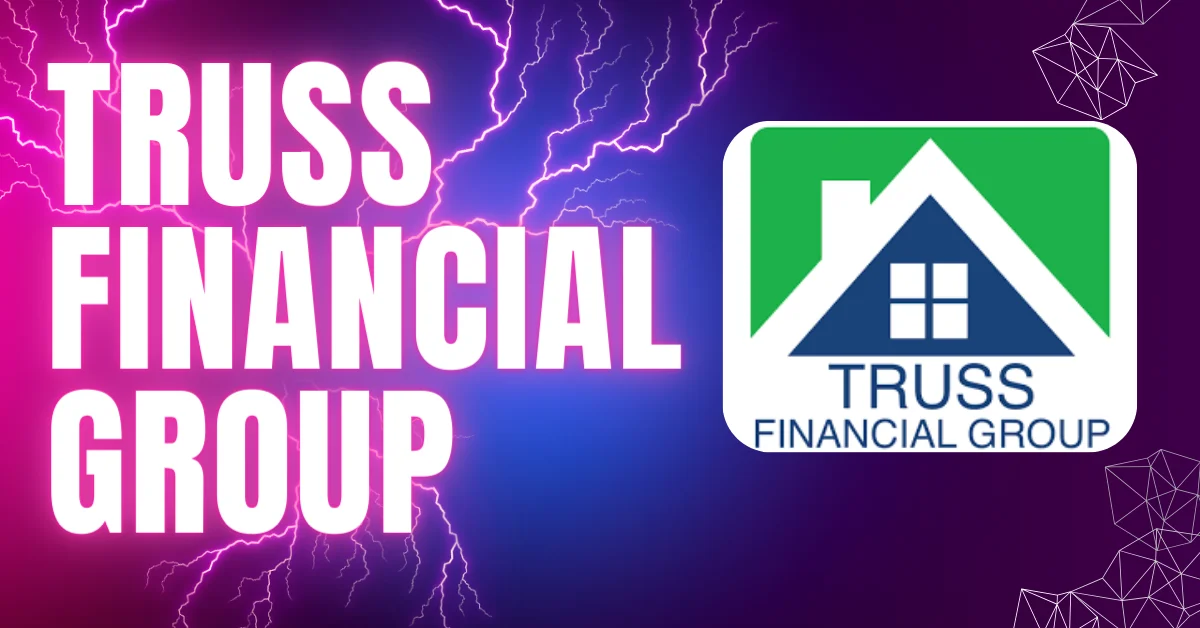
- Minimum credit score: 620
- Minimum LTV ratio: 75%
- Maximum LTV ratio: 80%
- Minimum DTI ratio: 43%
- Rates: Starting at 5.99% APR
- Fees: $495 origination fee, $75 annual fee
2. Griffin Funding
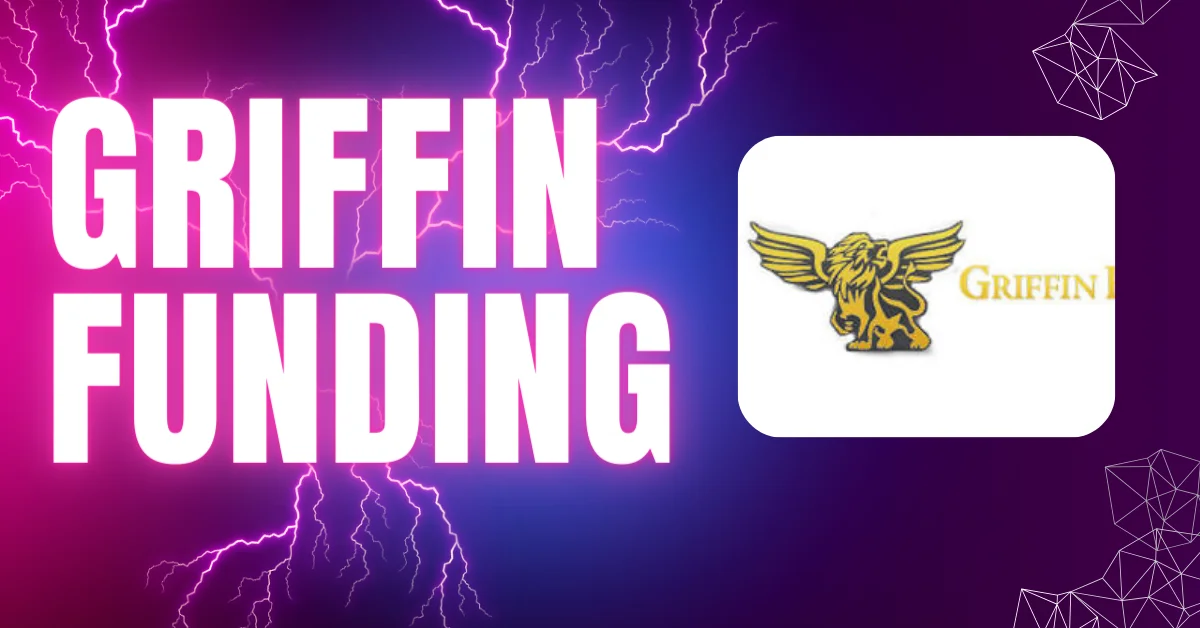
- Minimum credit score: 640
- Minimum LTV ratio: 80%
- Maximum LTV ratio: 85%
- Minimum DTI ratio: 43%
- Rates: Starting at 6.49% APR
- Fees: $495 origination fee, $95 annual fee
3. Mortgage Depot
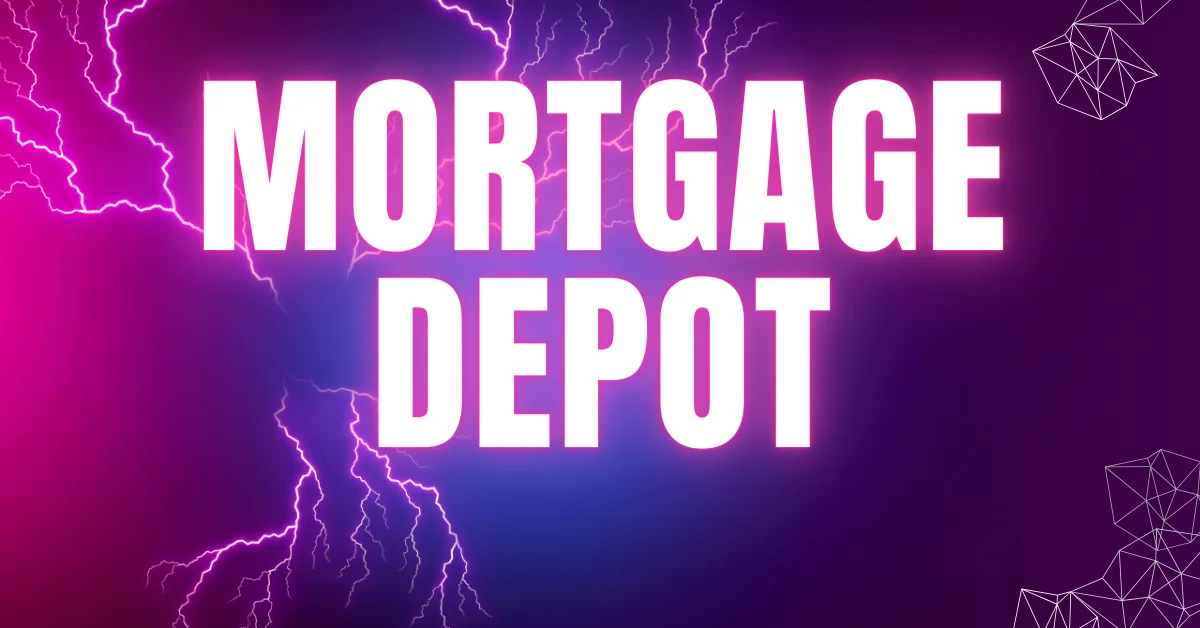
- Minimum credit score: 660
- Minimum LTV ratio: 75%
- Maximum LTV ratio: 80%
- Minimum DTI ratio: 43%
- Rates: Starting at 6.99% APR
- Fees: $495 origination fee, $85 annual fee
4. NewRez
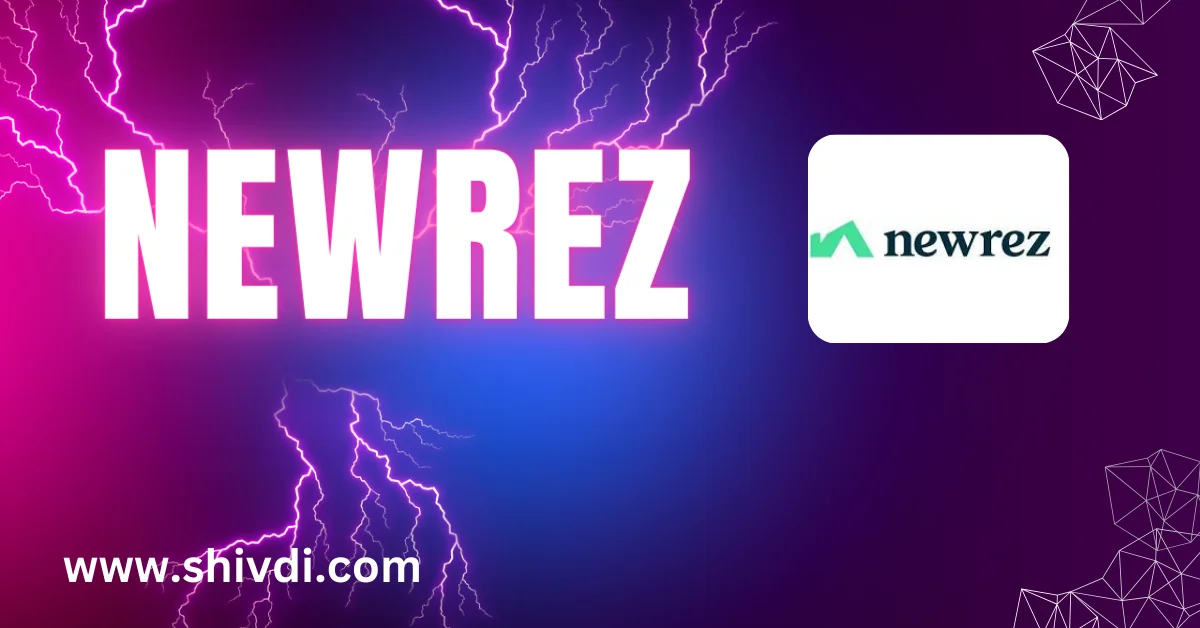
- Minimum credit score: 640
- Minimum LTV ratio: 75%
- Maximum LTV ratio: 80%
- Minimum DTI ratio: 43%
- Rates: Starting at 6.49% APR
- Fees: $495 origination fee, $75 annual fee
5. Caliber Home Loans

- Minimum credit score: 620
- Minimum LTV ratio: 75%
- Maximum LTV ratio: 80%
- Minimum DTI ratio: 43%
- Rates: Starting at 5.99% APR
- Fees: $495 origination fee, $75 annual fee
6. Paramount Residential Mortgage Group
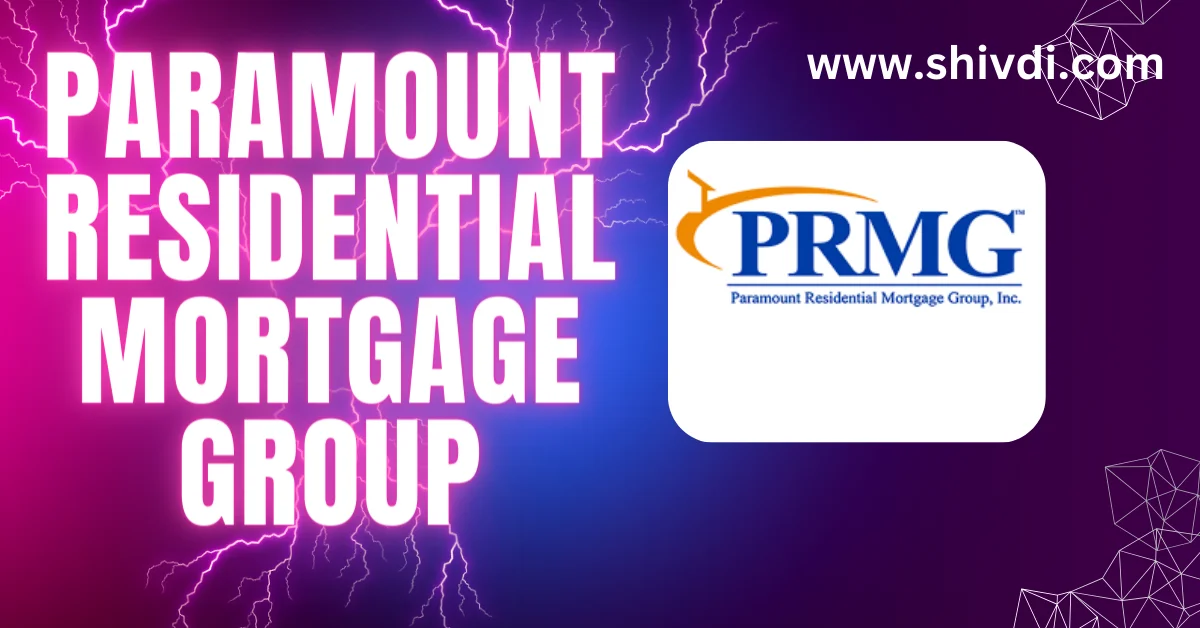
- Minimum credit score: 640
- Minimum LTV ratio: 75%
- Maximum LTV ratio: 80%
- Minimum DTI ratio: 43%
- Rates: Starting at 6.49% APR
- Fees: $495 origination fee, $75 annual fee
7. Freedom Mortgage
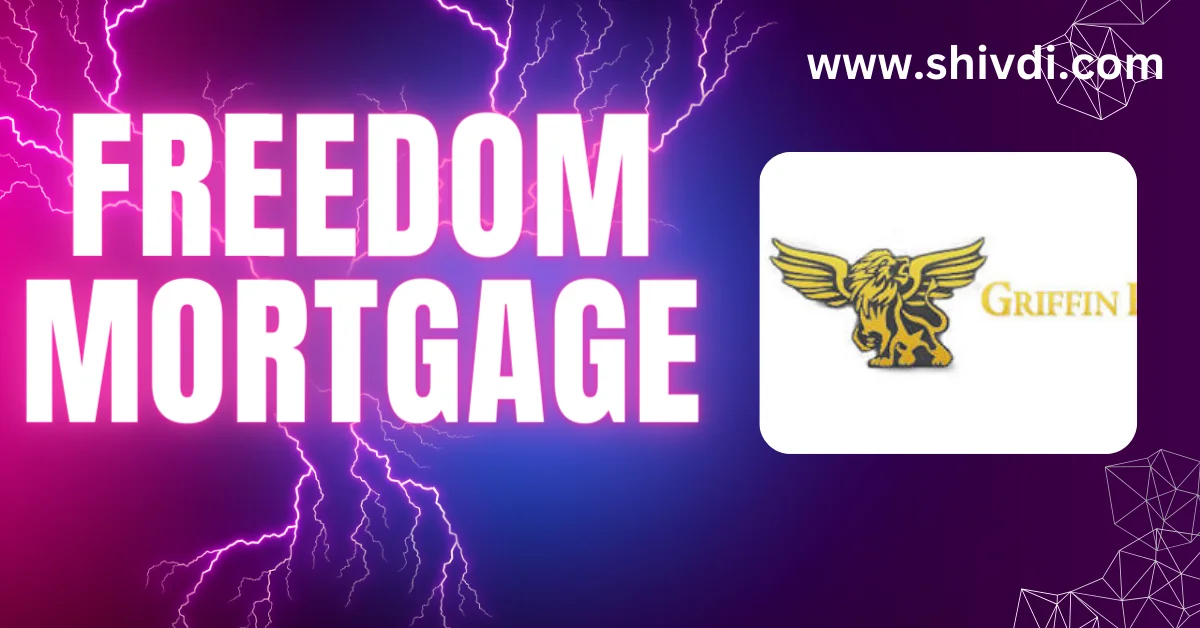
- Minimum credit score: 660
- Minimum LTV ratio: 75%
- Maximum LTV ratio: 80%
- Minimum DTI ratio: 43%
- Rates: Starting at 6.99% APR
- Fees: $495 origination fee, $85 annual fee
8. PrimeLending
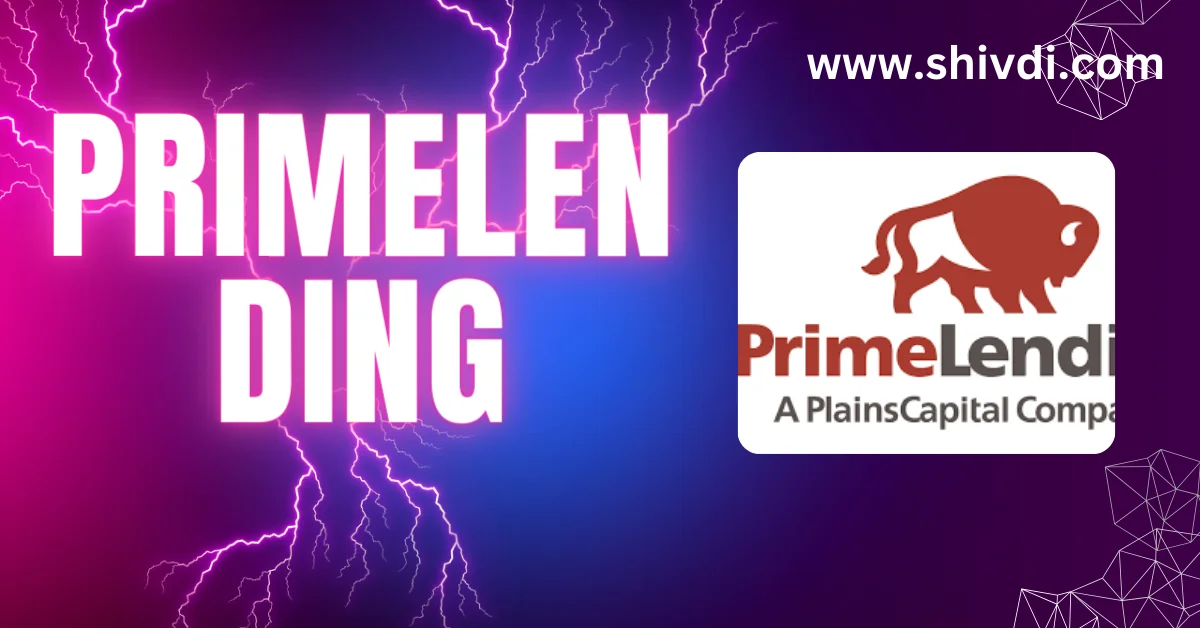
- Minimum credit score: 640
- Minimum LTV ratio: 75%
- Maximum LTV ratio: 80%
- Minimum DTI ratio: 43%
- Rates: Starting at 6.49% APR
- Fees: $495 origination fee, $75 annual fee
9. Amerisave Mortgage
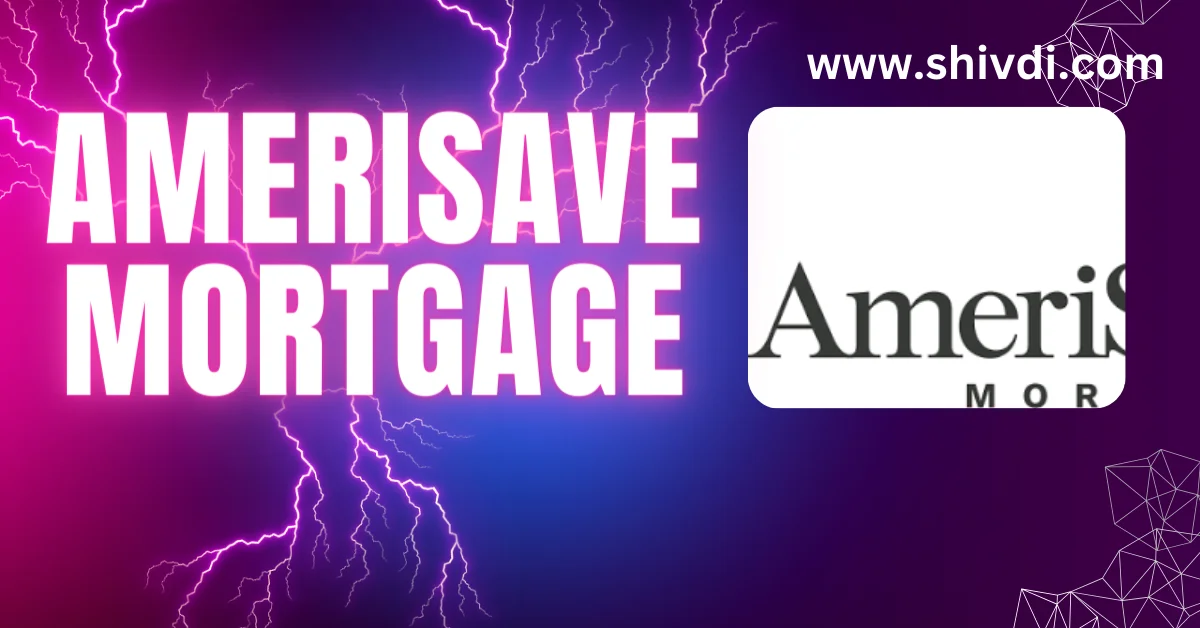
- Minimum credit score: 620
- Minimum LTV ratio: 75%
- Maximum LTV ratio: 80%
- Minimum DTI ratio: 43%
- Rates: Starting at 5.99% APR
- Fees: $495 origination fee, $75 annual fee
10. United Wholesale Mortgage
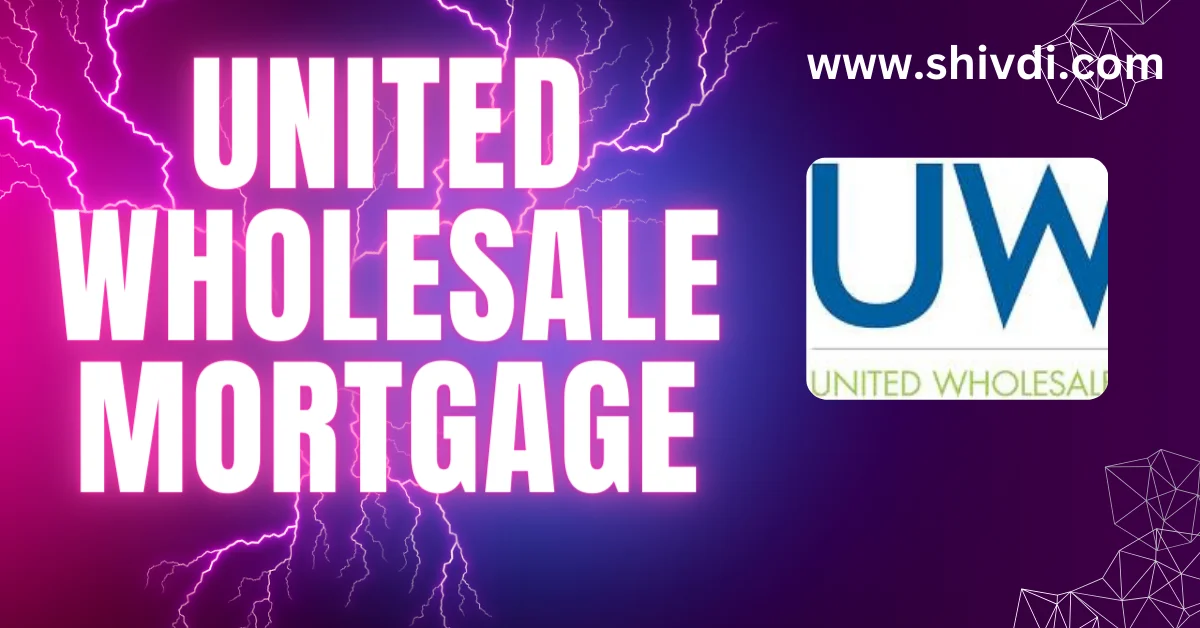
- Minimum credit score: 640
- Minimum LTV ratio: 75%
- Maximum LTV ratio: 80%
- Minimum DTI ratio: 43%
- Rates: Starting at 6.49% APR
- Fees: $495 origination fee, $75 annual fee
11. Churchill Mortgage
- Minimum credit score: 620
- Minimum LTV ratio: 75%
People also ask
What is the difference between a no doc HELOC and a stated income HELOC?
A no doc HELOC does not require any documentation of income or assets. A stated income HELOC requires the borrower to state their income and assets, but the lender does not verify this information. Stated income HELOCs are typically easier to qualify for than no doc HELOCs, but they may have higher interest rates and fees.
Can I get a no doc HELOC with no income?
It is possible to get a no doc HELOC with no income, but it can be difficult. Lenders will typically want to see some evidence of your ability to repay the loan, even if it is not traditional income verification. For example, you may be able to qualify for a no doc HELOC if you have a large amount of savings or assets.
What is my LTV ratio?
Your LTV ratio, or loan-to-value ratio, is the amount of your mortgage loan divided by the appraised value of your home. For example, if you have a $200,000 mortgage and your home is appraised at $250,000, your LTV ratio is 80%. LTV ratios are used by lenders to determine how much you can borrow on your HELOC.
What is my CLTV ratio?
Your CLTV ratio, or combined loan-to-value ratio, is the total amount of your mortgage debt divided by the appraised value of your home. This includes your first mortgage, any second mortgages, and any HELOCs. CLTV ratios are used by lenders to determine your risk of defaulting on your loan.
How much equity do I need to qualify for a no doc HELOC?
The amount of equity you need to qualify for a no doc HELOC varies from lender to lender. However, most lenders will require you to have at least 20% equity in your home.
What is the maximum loan amount for a no doc HELOC?
The maximum loan amount for a no doc HELOC is typically 80% of your home’s equity. However, some lenders may offer higher loan amounts.
What are the interest rates for no doc HELOCs?
Interest rates for no doc HELOCs are typically higher than interest rates for traditional HELOCs. This is because no doc HELOCs are considered to be riskier for lenders.
What are the fees for no doc HELOCs?
No doc HELOCs typically have higher fees than traditional HELOCs. These fees may include origination fees, appraisal fees, and annual fees.
Is a no doc HELOC right for me?
No doc HELOCs can be a good option for borrowers who need access to cash equity in their home but have difficulty qualifying for a traditional HELOC. However, it is important to be aware of the higher interest rates and fees associated with no doc HELOCs.
Here are some other questions that people often ask about no doc HELOCs:
- Can I use a no doc HELOC to consolidate debt? Yes, you can use a no doc HELOC to consolidate debt. This can be a good way to save money on interest and simplify your monthly payments.
- Can I use a no doc HELOC to make home improvements? Yes, you can use a no doc HELOC to make home improvements. This can be a good way to increase the value of your home or make it more comfortable for your family.
- Can I use a no doc HELOC to invest? Yes, you can use a no doc HELOC to invest. However, it is important to be aware of the risks involved in investing.
If you are considering a no doc HELOC, it is important to weigh the pros and cons carefully and to compare offers from multiple lenders.
Conclusion
No doc HELOCs can be a great way to access cash equity in your home, even if you have difficulty qualifying for a traditional HELOC. They are especially beneficial for self-employed individuals, freelancers, and small business owners, as well as borrowers with bad credit.
Here are some of the key benefits of no doc HELOCs:
- Easier to qualify for: No doc HELOCs do not require traditional income verification, making them easier to qualify for than traditional HELOCs.
- Can be a good option for borrowers with bad credit: No doc HELOCs may be a good option for borrowers with bad credit, as lenders may be more willing to approve a no doc HELOC than a traditional HELOC.
- Can be used for a variety of purposes: No doc HELOCs can be used for a variety of purposes, such as consolidating debt, making home improvements, or investing.
If you are considering a no doc HELOC, be sure to compare offers from multiple lenders and to carefully weigh the pros and cons. Here is a final bit of advice: be sure to understand the terms and conditions of your loan before signing on the dotted line.
If you are ready to learn more about no doc HELOCs and to find a lender that is right for you, contact a mortgage broker today.
